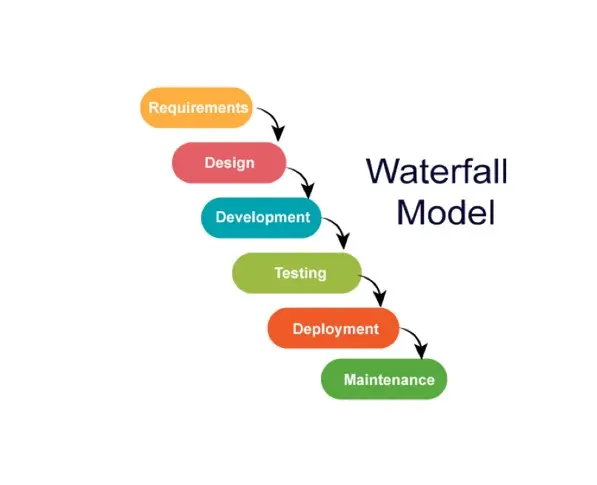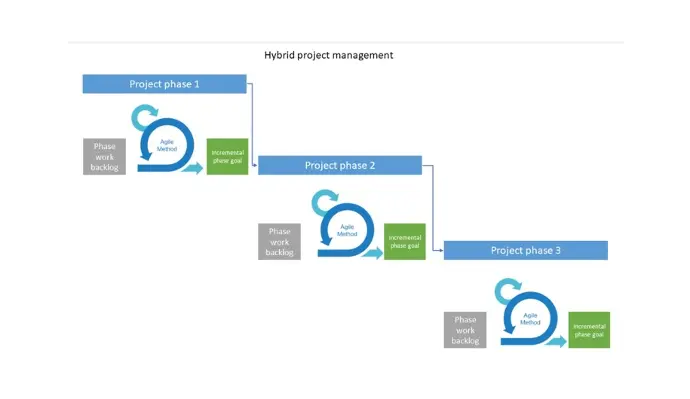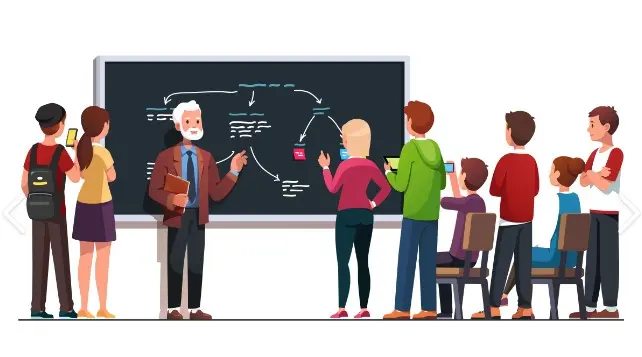WATERFALL OVERVIEW
- Linear Process: Waterfall follows a step-by-step sequence, where each phase (requirements, design, development, testing, deployment, maintenance) must be completed before moving to the next.
- Predictability: It’s predictable because the entire project is planned upfront.
- Rigidity: Changes are challenging once a phase is complete.
- Documentation-Heavy: Detailed documentation is essential.
- Risk Management: Risks are addressed early in the process.

WATERFALL PHASES
- Requirements:
- Determine the project’s scope, understand business obligations, and identify user needs. Determines resources, team responsibilities, and timelines.
- Design:
- Designers create solutions based on requirements.
- They develop schedules, project milestones, and detailed blueprints for deliverables, which could be software or physical products. System architecture and use cases are also determined during this stage
- Development:
- Developers build the product based on design specifications.
- It involves coding, building, and creating the actual system based on the design specifications.
- Verification / Testing:
- Validates that the product meets requirements.
- Testing includes functional, performance, user acceptance testing and security assessments. Any issues are addressed before moving forward.
<Deployment or Go-Live milestone>
- Maintenance:
- Ongoing support, bug fixes, and updates after deployment.
- Bug fixes, updates, and enhancements fall under this phase.
AGILE OVERVIEW
Agile project management is an iterative approach that prioritizes continuous releases and customer feedback.
Rather than waiting until the end of a project, teams deliver working products throughout, fostering collaboration and adaptability.
Small, high-functioning teams.

AGILE CHARACTERISTICS
- Iterative and Incremental
- Customer-Centric
- Adaptive Planning
- Transparency
- Collaboration
- Efficient Communication
- Fast Delivery
- Embracing Change
- Self-Organizing Teams
- Focus on Quality
- Risk Mitigation
- Adaptive Leadership
- Minimal Documentation
- Continuous Improvement

HYBRID OVERVIEW
Tailored flexibility: Customize your approach based on the project's specific needs. Adapt it to the project instead of forcing the project to fit a rigid methodology.
Phased structure: The hybrid approach incorporates the phased structure of traditional project management. It provides a roadmap and defined milestones which are great for project teams with well-defined requirements.
Iterative progress: Like Agile, hybrid project management encourages iterative progress and frequent assessments. You can make adjustments as needed throughout the project's lifecycle.

Main Uses:
Waterfall
Waterfall’s structured approach is best suited
for predictable, well-defined projects where flexibility isn’t critical.
- Less complex requirements
- Predictable outcomes
Agile
Agile is ideal for projects where flexibility, collaboration, and responsiveness are critical. It thrives in dynamic environments and industries where change is constant.
- Software development
- Product development
- Marketing campaigns
- Research and Developmen
Hybrid
Offers the best of both worlds—structured planning and adaptability. It’s a pragmatic choice for diverse projects.
- Complex projects
- Mixed deliverables
- Sequential planning
- Balancing predictability and agility


